West Valley City, UT Pollen and Allergy Report for Summer 2023
Pollen Allergy Trends in West Valley City, UT
When is pollen lowest in West Valley City, UT?

February
Lowest month total PPM
Avg. PPM
When is pollen highest in West Valley City, UT?

May
Highest month total PPM
Avg. PPM
How does pollen in West Valley City, UT compare to Utah?
West Valley City has a lower average PPM than the state of Utah.
West Valley City yearly avg PPM:
Utah yearly avg PPM:
How does pollen in West Valley City, UT compare to the USA?
West Valley City has a lower average PPM than the USA.
West Valley City yearly avg PPM:
USA yearly avg PPM:
Is pollen worse this year in West Valley City, UT?
Spring 2023 was worse than spring 2022.
Spring 2023 PPM:
Spring 2022 PPM:
Average PPM in West Valley City, UT
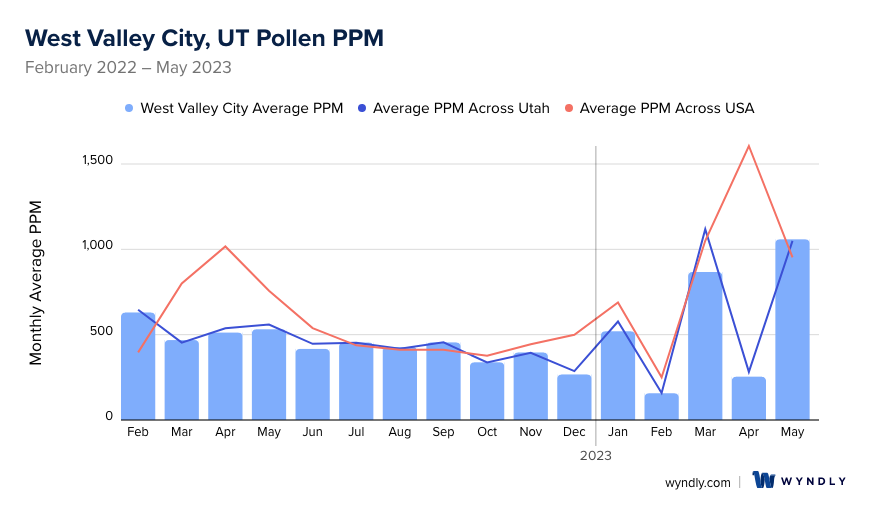
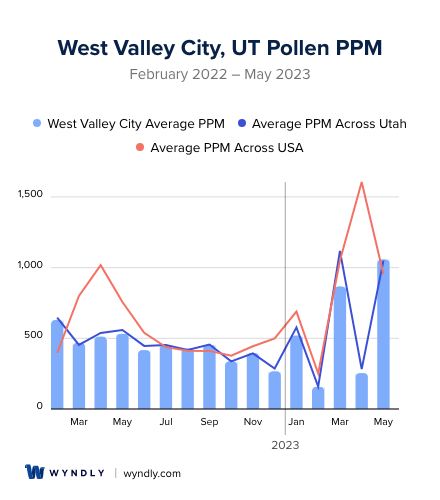
West Valley City, UT Pollen and Allergy Breakdown by Month
Grass
When is grass pollen highest in West Valley City, UT?
May has the highest grass pollen in West Valley City, UT with an average PPM of
When is grass pollen lowest in West Valley City, UT?
December has the lowest grass pollen in West Valley City, UT with an average PPM of
Tree
When is tree pollen highest in West Valley City, UT?
May has the highest tree pollen in West Valley City, UT with an average PPM of
When is tree pollen lowest in West Valley City, UT?
August has the lowest tree pollen in West Valley City, UT with an average PPM of
Weed
When is weed pollen highest in West Valley City, UT?
September has the highest weed pollen in West Valley City, UT with an average PPM of
When is weed pollen lowest in West Valley City, UT?
February has the lowest weed pollen in West Valley City, UT with an average PPM of
West Valley City, UT Pollen Monthly Breakdown by Pollen Type
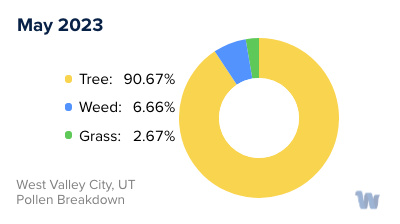
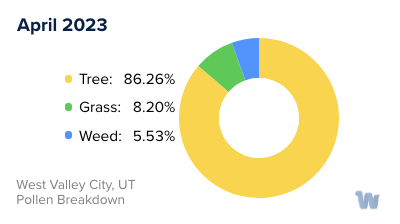
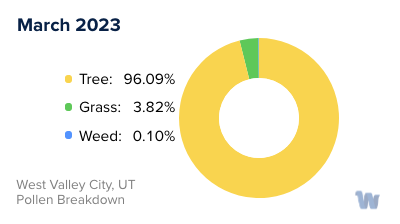
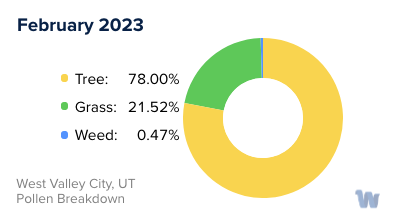
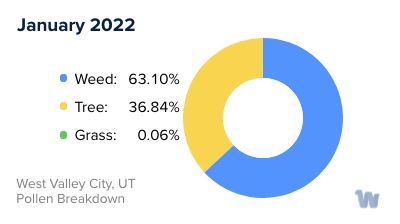
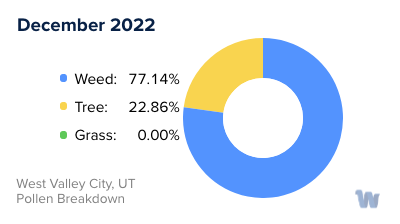
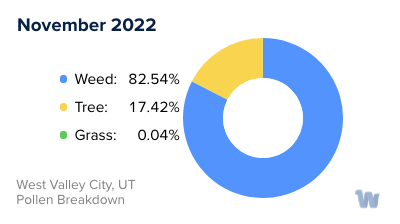
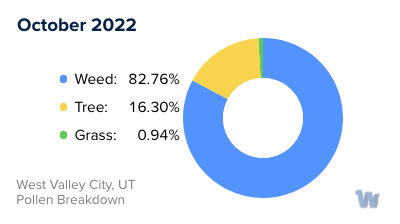
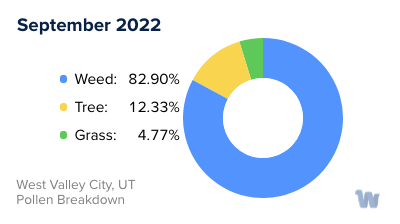
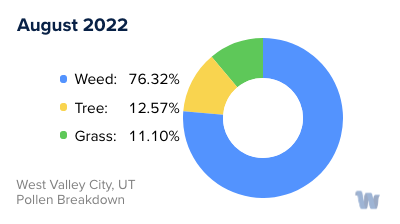
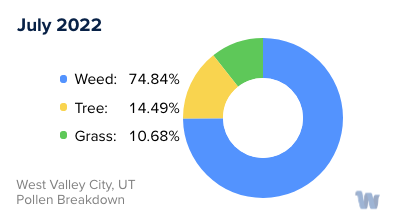
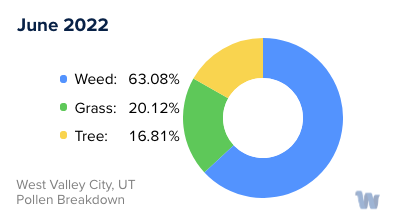
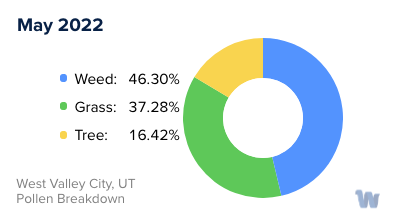
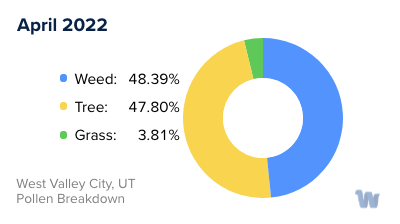
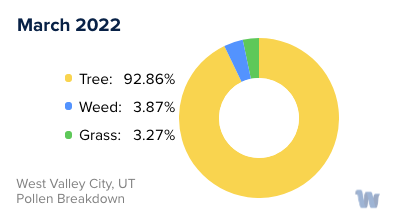
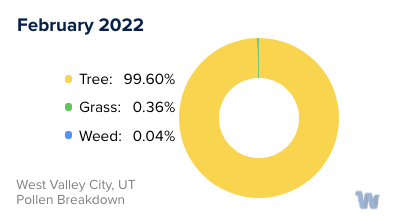
Pollen and Hay Fever in West Valley City, UT
In the charming West Valley City, Utah, as the seasons change, residents often find themselves amid a symphony of blooming flowers and trees. However, this natural beauty comes with a less welcomed companion - pollen allergies, commonly known as hay fever.
Pollen is a fine powder produced by plants for fertilization. It travels through the air and, unfortunately, can trigger allergic reactions in some people. In West Valley City, there are three primary types of pollen to be aware of: tree, grass, and weed pollen.
Tree pollen is typically the first to make its appearance as winter recedes. From late winter to early spring, trees such as oaks, pines, and junipers release pollen into the air. This can cause sensitive individuals to experience symptoms like sneezing and itchy eyes.
As we move into late spring and early summer, grass pollen takes center stage. Grasses like Bermuda, Kentucky bluegrass, and ryegrass are common in West Valley City and are known to produce pollen that can be particularly irritating for allergy sufferers.
Weed pollen follows in late summer and fall. The culprits here include plants like ragweed, sagebrush, and tumbleweed. During this time, the air can become thick with these pollens, affecting the quality of life for those with sensitivities.
It's important to note that West Valley City is situated in a valley, which means that pollen can sometimes be trapped by the surrounding mountains, causing higher concentrations in the air. This can make the pollen seasons more intense for the residents.
Understanding the types of pollen and the seasons in which they are prevalent in West Valley City can be empowering. Being informed helps residents anticipate and make necessary adjustments to their daily routines during high pollen seasons.

